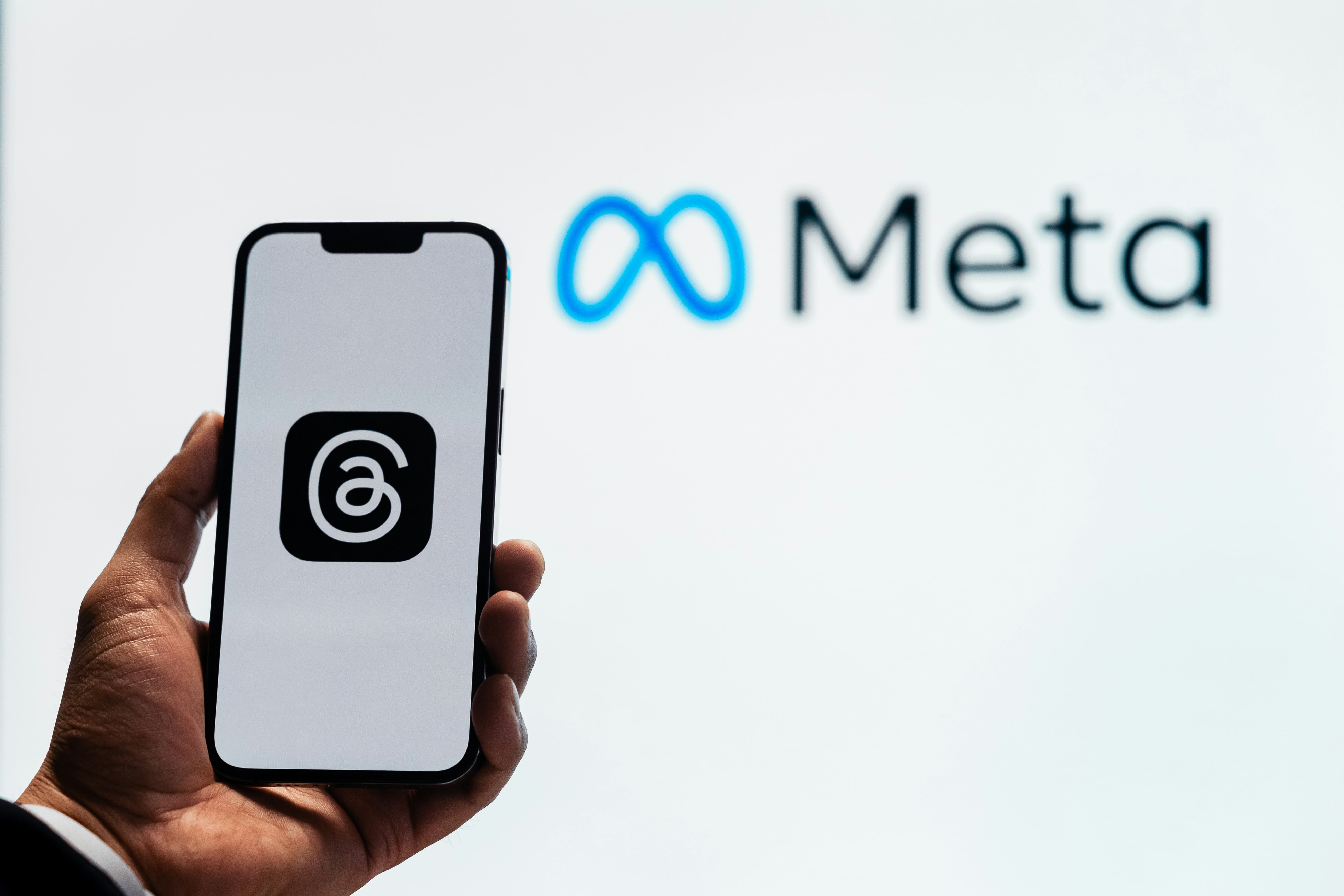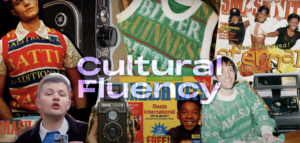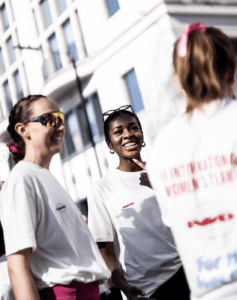Hitting 100 million users in just 5 days, you’ll undoubtedly have heard everybody talking about Threads. But what actually is the new text-based app owned by Meta?
Threads is designed to take “what Instagram does best and expand that to text, creating a positive and creative space to express your ideas”, says Meta. “Just like on Instagram, with Threads you can follow and connect with friends and creators who share your interests – including the people you follow on Instagram and beyond”.
The main focus of Threads is to act as a culture hub, where users can be entertained and continue to build their community. It’s a space where humour and creativity is welcomed, and brands and users can share less curated content, showing their authentic and natural tone of voice.
Within the app, your Threads feed will share posts from your Instagram followers and recommend content from new creators. Positive and productive conversations are at the forefront of the Threads strategy and there have been many tools created to enhance and encourage this. Namely, the limitations you can put on who can mention you or reply to you within Threads, and much like Instagram you can add hidden words to filter out replies to your Threads that contain specific words. Whoever you’ve blocked on Instagram will automatically be blocked on Threads, too.
With the app only being a few weeks old, it goes without saying that we should be expecting a number of new updates and features in the near future. Improved recommendations and a stronger search function, for example, will make it easier to follow topics and trends in real time.
Meta has also confirmed that they will be making Threads compatible with the ActivityPub. This is ‘a set of decentralised standards for social networking’ which will make ‘Threads interoperable with other apps that also support the ActivityPub protocol, such as Mastodon and WordPress’. Other services including Tumblr have shared plans to support the ActivityPub protocol in the future, too.
@carterpcs Are you on Threads? #carterpcs #tech #techtok #threads #instagram #facebook #meta ♬ Blue Blood – Heinz Kiessling
With Threads introducing features like the launch of topics, trends, search and a chronological following feed, it might raise questions about the future of Twitter. It’s important to recognise, however, that both platforms cater to distinct user needs and offer unique value propositions.
Twitter excels as a public platform for real-time news, global conversations, and wide-scale engagement. Its brevity-focused format encourages concise and impactful communication, making it an ideal space for breaking news, trending discussions and public discourse. Threads, on the other hand, emphasises private conversations, intimate connections, and curated content-sharing among close friends, providing a more personal and focused experience.
With Threads being so new, brands and influencers are able to test and experiment to find their tone of voice on the platform. It is also another great opportunity for brands to grow and build their community.
RyanAir appears to be using the same content strategy from their Twitter and Instagram accounts on Threads. Every marketer is aware of RyanAir’s social strategy. They use memes and humour to jump on topical conversations, making them one of the most followed airline brands on Threads.

Wendy’s Threads strategy is also similar to that of their Twitter account, albeit using different content. Their strategy has clearly proven it works as their follower growth on the platform has grown by 22.09%, compared to their Instagram followers. Wendy’s activity on the platform is indicative of what other brands can and should be doing to keep retention of their followers and receive positive engagement.
Other brands such as Boohoo could learn a thing or two from Wendy’s and RyanAir. In an attempt to use humour to launch their Threads strategy, they asked their followers: ‘what is everyone’s ick?’. Boohoo received negative engagement, with people commenting ‘brands jumping into a new space before everyone’.
Boohoo’s Threads post is a clear example of brands failing to read the room. Humour is the key factor in using Threads (at least in the early stages) but brands need to be careful with the type of humorous content they post, and should be ready to accept both a positive and negative response. Afterall, Threads is a learning curve for us all.
In deciding whether Threads is for them, brands should factor in their own tone of voice, style of content as well as how often they want to be posting. As the app continues to develop and new features are added, they will need to think strategically about how they want to communicate with their audience on a platform that feels similar but is ultimately different to Twitter.
With a new platform often comes the emergence of a new set of creators. Brands should therefore be keeping their eye on creators that are being born on Threads.
Like with all new apps, there are pros and cons. With the algorithmic element of Threads, it feels addictive and the ability to automatically retain your Instagram followers and blue verification tick means you’re launching with a ready-made audience. This presents a golden opportunity for brands to enhance their reach and engage with relevant demographics, niche audiences, and vibrant communities. They can create tailored content and actively participate in discussions surrounding trending topics.
Being created by Meta, Threads is also a direct extension of Instagram. Traditionally, people would keep their persona’s on Twitter and Instagram separate with distinct and different methodologies. Now, it will be easy to share thoughts you would have traditionally posted on Twitter with Instagram friends. Whether that’s a good thing or not is to be decided.
With the introduction of the ActivityPub, creators will also have the opportunity to allow their posts to appear on other apps and services, boosting their reach and giving them a chance to grow their audience.
It goes without saying that one of the biggest worries surrounding Threads is the lack of time it has behind it. Could it be another BeReal or Clubhouse that launches to fanfare but quickly loses its interest? Even though it’s early days, the Threads retention rate is not looking too promising, with it being lower than nearly every major platform. According to Sensor Tower, on day one of Threads, the retention rate was at 37%. Over a week on, it’s now at just 16%.
Olivia Moore, Consumer Partner at Andreessen Horowitz, has a few theories around why this might be the case:
1. The Instagram social graph isn’t ideal for a Twitter-like app. With your account being connected to your Instagram, posts are directly tied to your real identity discouraging anons, meme accounts, and fan accounts. Will users really want friends and family reading their Tweets?
2. Instagram users are well experienced in using images, but we don’t know if they’re any good at using words
3. Even so early on, there have been many celebrities and brands who have joined and are cluttering the feed with blue ticks. This can create an intimidating space which lacks that element of personalisation.
It’s still early days with Threads and with its similarities to Twitter, it’s key for brands and influencers alike to keep an open mind and experiment with different styles of content. It is also a great opportunity, whilst there is no AD placement, for brands and users to organically grow both their Instagram and Threads channels.
Furthermore, even though there are clearly some positives which will seem attractive to a brand, it’s important to not lose sight of what you know works best.
If you and your brand are already successful on Instagram, don’t let Threads cloud your vision. Don’t not use it, but be careful to not let it cannibalise your brand’s activities on Instagram.






